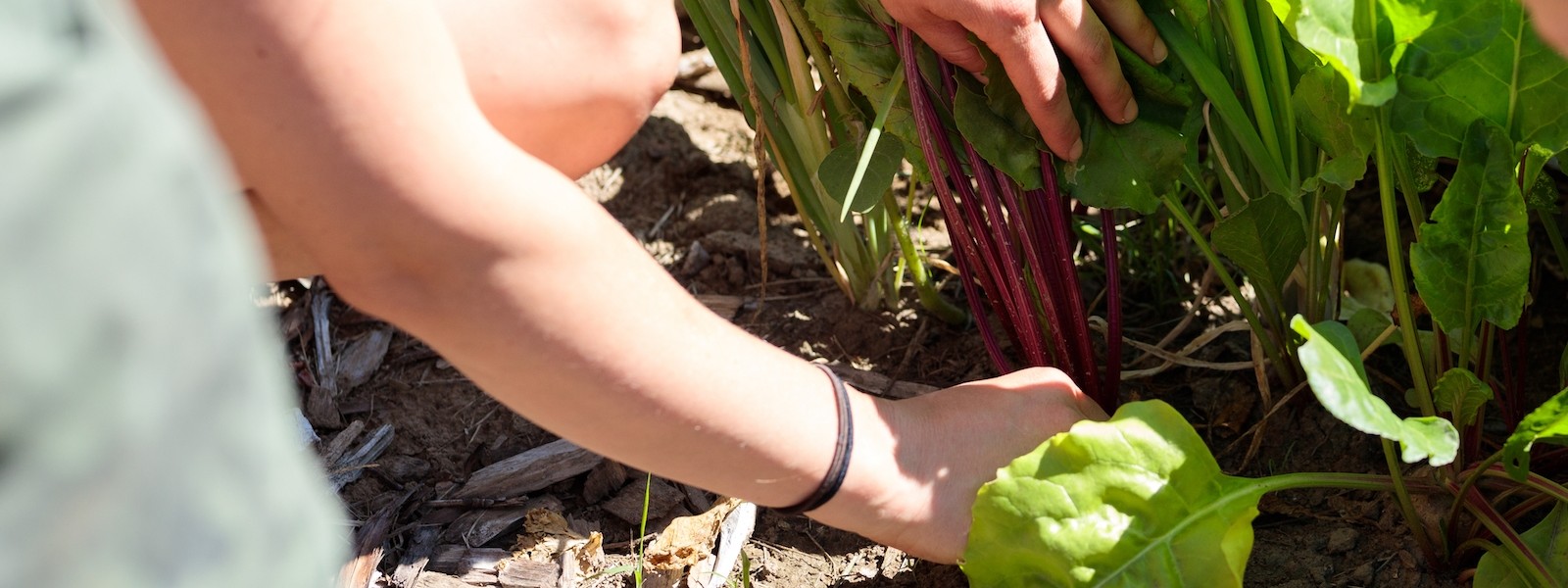Soil Testing
Soil fertility is an important part of maintaining a healthy garden. Plants require many nutrients to grow. A few are required in large amounts, specifically nitrogen, phosphorus, potassium, calcium and magnesium. Having the right pH (which affects the availability of the plant nutrients) and high organic matter (which acts as a reservoir for nutrients) are also essential for maximizing the potential of your garden.
To best manage your soil fertility, start with a simple soil test. See the resources below for information on where to get a soil sample kit. We recommend sending soil samples to the University of Vermont Lab or your local, state university lab. Basic garden soil testing includes pH, organic matter, P,K, Ca, Mg, S, and micronutrient analysis. You can also opt to test for heavy metals.
How to take a soil sample
Timing is key. You can take a soil at any time, but it’s best to sample soil before establishing your garden, either in the fall the year prior to planting or early in the spring. In established areas, sample your soil either early in the fall or spring to give yourself time to apply amendments if needed before the frost or first spring planting. If you’ve recently limed or fertilized your soil, wait for at least six to eight weeks before sampling.
Where to sample. If your garden is big and/or one area seems healthier than another, you may consider sampling each area separately. For example, it’s best to test the soil in your veggie garden separately from your flower beds. Similarly, if there is a spot in your garden where plants are struggling to grow, test it separately from the rest of your garden. Alternatively, for smaller gardens and/or gardens that have only one soil type or area, you may just need one test to get a good picture of what’s happening in your soil. In either case, each sample should consist of multiple subsamples. Split each unique area into several smaller sections and collect a sample from each sub-section. Then combine them in a clean bucket to make one sample. This will ensure your results give you an overall picture of your garden.
Gather your tools. To take a soil sample you’ll need a:
- Shovel
- Small hand trowel
- Clean bucket
- Soil sample kit (see below)
Collecting the sample. To take a soil sample, dig a shovel into the ground about 6 inches. Remove a wedge of soil and set it aside. Next, use a small trowel to take a small scoop of soil from one side of the hole and place it in a clean bucket. This is your “core” sample. Refill the hole and repeat the process several times by walking in a zig-zag patter over your sample area. Mix your “core” samples together thoroughly and then fill a plastic bag about 1/2 full with your mixed sample. If you are sending multiple soil samples to test, make sure you mark the bags!
How Often Should I Test My Soil? Once you’ve established a baseline, it’s best to sample your soil every year or every other year to know how best to manage your soil fertility over time. You may consider sampling more often or again in the same year if you experience a “problem” spot.
Where to get a soil sample kit
We recommend having your soil test completed by the University of Vermont. Soil sample kits are available at most garden stores and UVM Extension offices.
UVM Agricultural and Environmental Testing Lab
262 Jeffords Hall, UVM
Burlington, VT
05405-1737
802-656-3030
AgTesting@uvm.edu
More Resources
Managing Vegetable Garden Soil Fertility in Vermont

